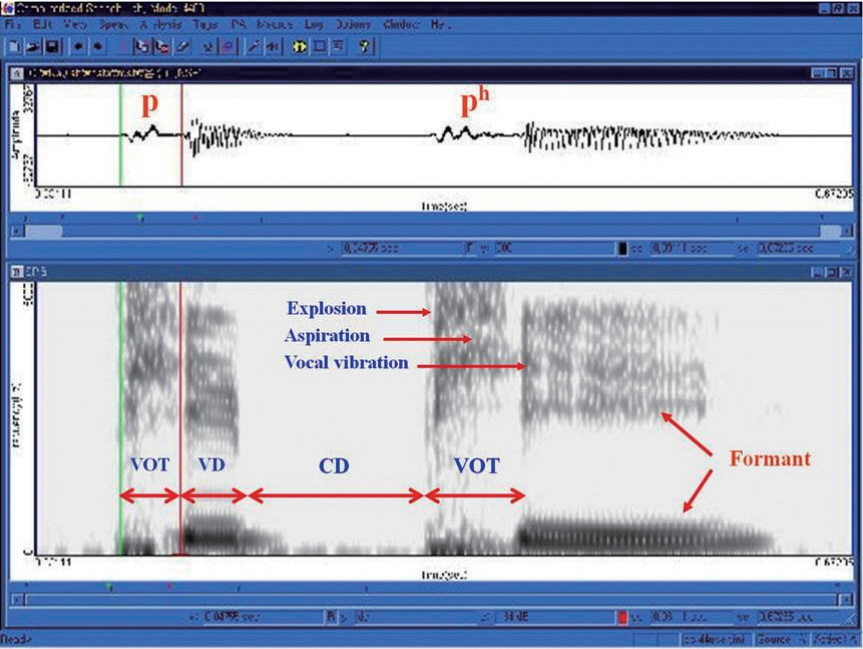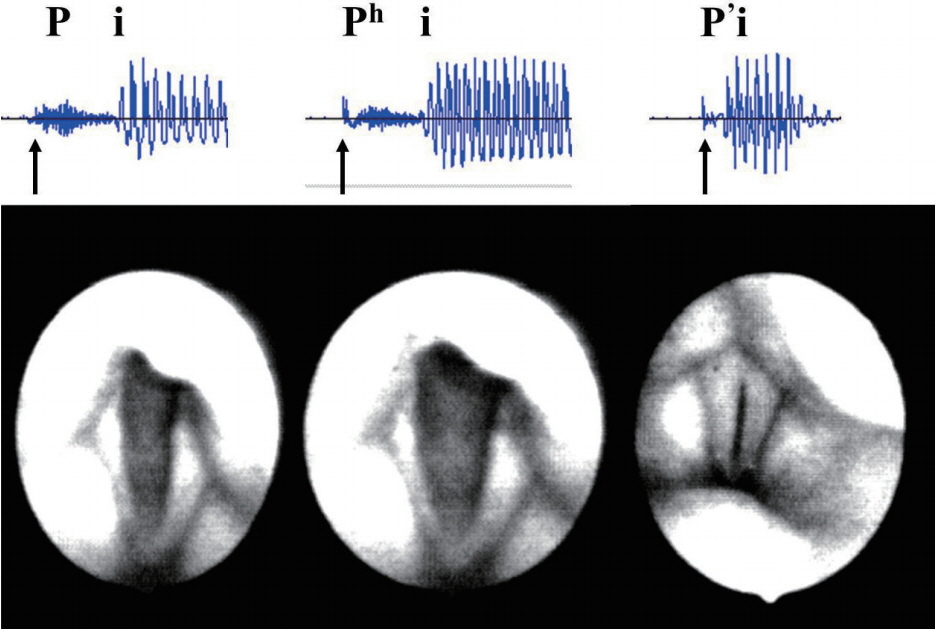Clin Exp Otorhinolaryngol.
2020 May;13(2):179-185. 10.21053/ceo.2019.01039.
Which Plosive Consonant Is More Useful for the Aerodynamic Analysis of Pathologic Voice?
- Affiliations
-
- 1Department of Otolaryngology-Head and Neck Surgery, Research Institute for Clinical Medicine of Chonbuk National University-Biomedical Research Institute of Chonbuk National University Hospital, Jeonju, Korea
- 2Department of Otolaryngology-Head and Neck Surgery, University of Medicine and Pharmacy, Hue University, Hue, Vietnam
- KMID: 2500291
- DOI: http://doi.org/10.21053/ceo.2019.01039
Abstract
Objectives
. Both acoustic and aerodynamic analyses are essential to evaluate the phonetic characteristics of voice pathology. The purpose of the study is to determine the magnitude of their correlation with the different types of bilabial plosive consonants.
Methods
. A controlled prospective study of 35 patients diagnosed with unilateral vocal fold paralysis was performed. The sustained vowel /a/ and bilabial voiceless consonants were used. Three common acoustic parameters were measured from a sustained vowel /a/ and aerodynamic parameters from a set of syllables /pi/, /phi/, and /p’i/. We determined the correlation coefficients between acoustic and aerodynamic measurements for the bilabial plosive consonants /pi/, /phi/, and /p’i/.
Results
. The mean values of acoustic parameters were higher than the thresholds of pathology. The mean values of aerodynamic parameters varied according to the types of consonants. The correlation between acoustic and aerodynamic parameters was significantly larger with the consonant /phi/ compared with the consonants /p’/ and /p/. The magnitudes of correlation were higher with the consonant /phi/ compared with the consonants /p’/ and /p/.
Conclusion
. The plosive consonant /phi/ may represent a more valuable investigative consonant than the consonants /p/ or /p’/ for aerodynamic analysis of voice pathology, especially in patients with unilateral vocal fold paralysis.
Keyword
Figure
Reference
-
1. Lopes LW, Cabral GF, Figueiredo de Almeida AA. Vocal tract discomfort symptoms in patients with different voice disorders. J Voice. 2015; May. 29(3):317–23.
Article2. Vaz Freitas S, Melo Pestana P, Almeida V, Ferreira A. Integrating voice evaluation: correlation between acoustic and audio-perceptual measures. J Voice. 2015; May. 29(3):390.
Article3. Patel R, Parsram KS. Acoustic analysis of subjects with vocal cord paralysis. Indian J Otolaryngol Head Neck Surg. 2005; Jan. 57(1):48–51.
Article4. Piccirillo JF, Painter C, Fuller D, Fredrickson JM. Multivariate analysis of objective vocal function. Ann Otol Rhinol Laryngol. 1998; Feb. 107(2):107–12.
Article5. Davis SB. Acoustic characteristics of normal and pathological voices. Speech Lang. 1979; 1:271–335.
Article6. Dejonckere PH. Assessment of voice and respiratory function. In : Remacle M, Eckel H, editors. Surgery of larynx and trachea. Berlin, Heidelberg: Springer;2009. p. 11–26.7. Rosenthal AL, Lowell SY, Colton RH. Aerodynamic and acoustic features of vocal effort. J Voice. 2014; Mar. 28(2):144–53.
Article8. Sheela S. Laryngeal aerodynamic analysis of vocal nodules. J Laryngol Voice. 2013; 3(1):10–3.
Article9. Hong KH, Kim HK, Niimi S. Laryngeal gestures during stop production using high-speed digital images. J Voice. 2002; Jun. 16(2):207–14.
Article10. Hong YT, Park MJ, Shin YJ, Minh PH, Hong KH. The phonetic characteristics in patients of bilateral vocal fold paralysis without tracheotomy. Clin Exp Otorhinolaryngol. 2017; Sep. 10(3):272–7.
Article11. Hartl DM, Hans S, Vaissiere J, Riquet M, Brasnu DF. Objective voice quality analysis before and after onset of unilateral vocal fold paralysis. J Voice. 2001; Sep. 15(3):351–61.
Article12. Dedo HH. Injection and removal of Teflon for unilateral vocal cord paralysis. Ann Otol Rhinol Laryngol. 1992; Jan. 101(1):81–6.
Article13. Oguz H, Demirci M, Safak MA, Arslan N, Islam A, Kargin S. Effects of unilateral vocal cord paralysis on objective voice measures obtained by Praat. Eur Arch Otorhinolaryngol. 2007; Mar. 264(3):257–61.
Article14. Yu P, Ouaknine M, Revis J, Giovanni A. Objective voice analysis for dysphonic patients: a multiparametric protocol including acoustic and aerodynamic measurements. J Voice. 2001; Dec. 15(4):529–42.15. Hirano M. Objective evaluation of the human voice: clinical aspects. Folia Phoniatr (Basel). 1989; 41(2-3):89–144.
Article16. Schutte HK. Aerodynamics of phonation. Acta Otorhinolaryngol Belg. 1986; 40(2):344–57.17. Tanaka S, Gould WJ. Vocal efficiency and aerodynamic aspects in voice disorders. Ann Otol Rhinol Laryngol. 1985; Jan-Feb. 94(1 Pt 1):29–33.
Article18. Kagaya R. A fiberscopic and acoustic study of the Korean stops, affricates and fricatives. J Phon. 1974; 2:161–80.
Article
- Full Text Links
- Actions
-
Cited
- CITED
-
- Close
- Share
- Similar articles
-
- Aerodynamic Analysis of Voice in Patients with Thyroidectomy
- Voice Comparison between Strap Muscle Retraction and Cutting Technique in Thyroidectomy
- Aerodynamic and Acoustic Analysis of Respiration and Phonation Methods in Normal Adults
- Comparison of Vocal Cord Motion and Voice Characteristics of Applied Music Singing Students before and after Singing Voice Therapy
- The Study of Combined Voice Therapy with Intralaryngeal Injection




